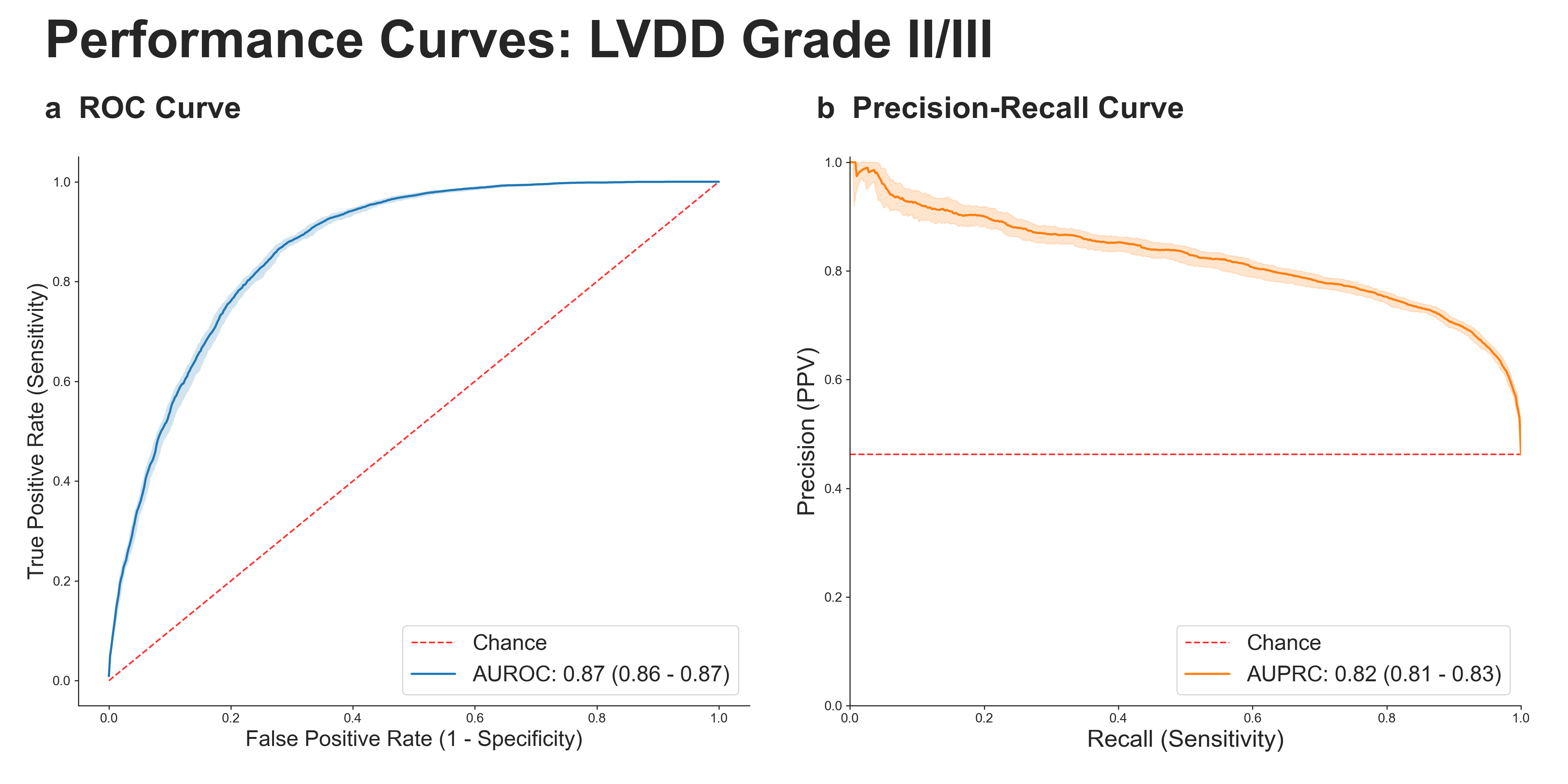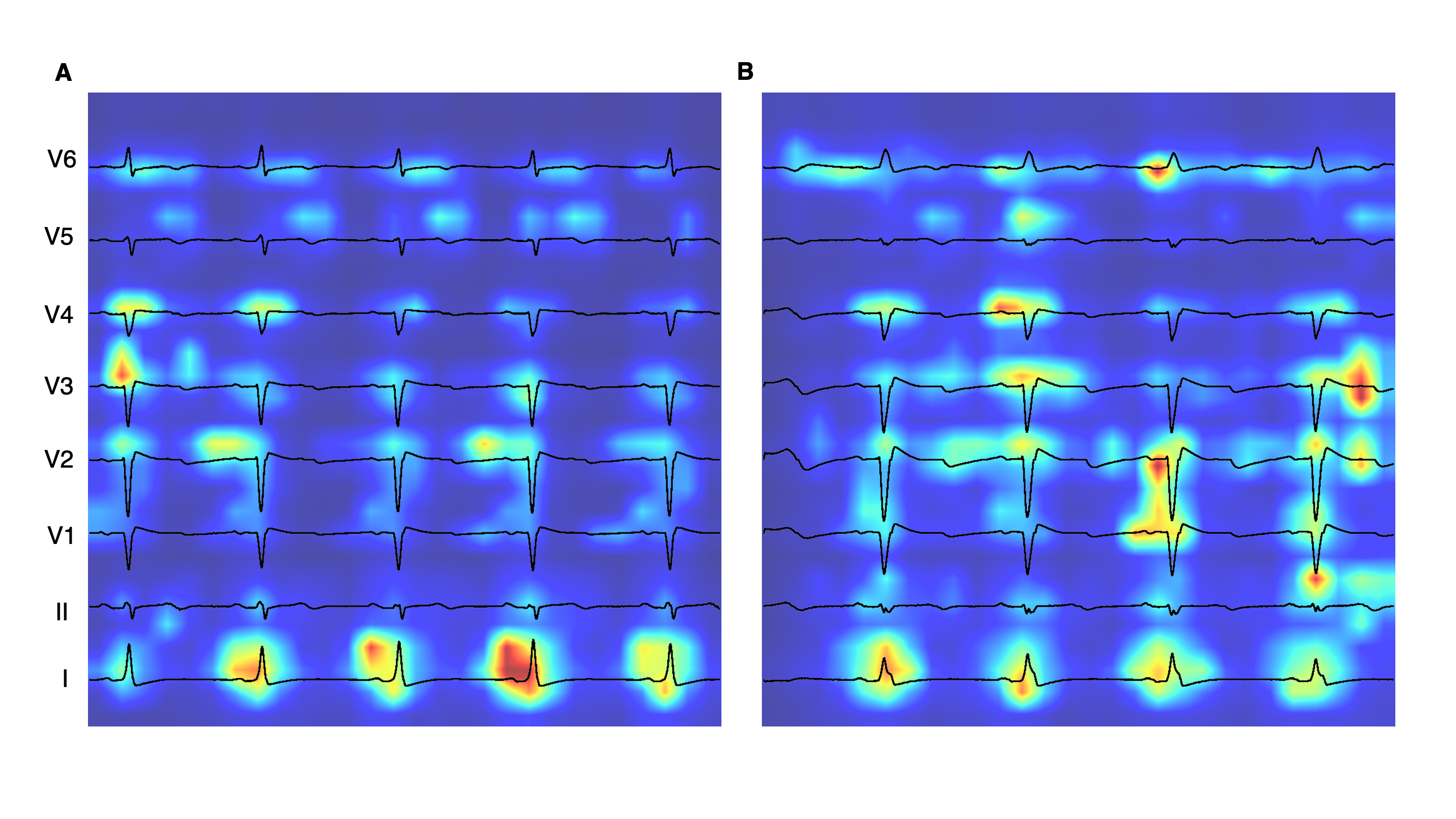Final ID: Su3070
Diagnosis of Left Ventricular Diastolic Dysfunction using Deep Learning on electrocardiograms
Abstract Body (Do not enter title and authors here): Left Ventricular Diastolic Dysfunction (LVDD) is implicated in conditions with abnormal LV filling and reduced LV distension and relaxation. Classified into grades I to IV, LVDD can be progressive particularly when its underlying cause is not appropriately treated. The prevalence of LVDD varies greatly (10-35%) in the elderly population, likely in the setting of varying inclusion criteria, LVDD grading and definitions. Specifically, LVDD Grade II/III is associated with a higher mortality risk and has been shown to predict major adverse cardiac events including myocardial infarction, heart failure, and all-cause mortality.
Echocardiography (echo) is used to quantify LVDD and its severity. Given its dynamic nature, identifying LVDD and its progression across other diagnostic modalities is vital. One such modality is the electrocardiogram (ECG). Although ECGs are widely accepted for the identification of abnormalities in cardiac conduction, pathology, and structure, some ECG findings may go undetected by human interpreters. Applying machine learning techniques to ECG for detection of LVDD may help address this need.
In this study, we used rule-based Natural Language Processing (NLP) on echo reports to extract cardiologist-confirmed annotations for the presence and grading of LVDD. The NLP pipeline labelled reports as having no LVDD, indeterminate LVDD, or LVDD of grades I, II, or III. These labels were paired to ECG data collected within 7 days of the echo. ECGs paired with an echo of LVDD Grade II were considered cases and were paired to controls matched based on age, sex and race. Patients were excluded if their ECG diagnostic codes indicated conduction abnormalities, concurrent ischemia, and prior intervention. We trained a ConvNeXt Large model capable of processing images of up to 512x512 pixels over 25 epochs against a patient aware 80% training and 20% testing split.
We collected 121,161 ECGs from 27,760 patients with an outcome prevalence of 31.4%. Our model detected patients with LVDD Grade II/III with AUROC of 0.87 (95% CI 0.86-0.87) and AUPRC of 0.82 (95% CI 0.81-0.83) (Figure 1). Saliency heatmaps showed regions around the QRS complex as more important for diagnosis of LVDD (Figure 2).
Our study demonstrates how machine learning can augment clinical practice. Specifically, it may prove to be a useful screening tool for patients at risk of worsening cardiac disease, resource limited areas, and primary care settings in which ECG is readily available.
Echocardiography (echo) is used to quantify LVDD and its severity. Given its dynamic nature, identifying LVDD and its progression across other diagnostic modalities is vital. One such modality is the electrocardiogram (ECG). Although ECGs are widely accepted for the identification of abnormalities in cardiac conduction, pathology, and structure, some ECG findings may go undetected by human interpreters. Applying machine learning techniques to ECG for detection of LVDD may help address this need.
In this study, we used rule-based Natural Language Processing (NLP) on echo reports to extract cardiologist-confirmed annotations for the presence and grading of LVDD. The NLP pipeline labelled reports as having no LVDD, indeterminate LVDD, or LVDD of grades I, II, or III. These labels were paired to ECG data collected within 7 days of the echo. ECGs paired with an echo of LVDD Grade II were considered cases and were paired to controls matched based on age, sex and race. Patients were excluded if their ECG diagnostic codes indicated conduction abnormalities, concurrent ischemia, and prior intervention. We trained a ConvNeXt Large model capable of processing images of up to 512x512 pixels over 25 epochs against a patient aware 80% training and 20% testing split.
We collected 121,161 ECGs from 27,760 patients with an outcome prevalence of 31.4%. Our model detected patients with LVDD Grade II/III with AUROC of 0.87 (95% CI 0.86-0.87) and AUPRC of 0.82 (95% CI 0.81-0.83) (Figure 1). Saliency heatmaps showed regions around the QRS complex as more important for diagnosis of LVDD (Figure 2).
Our study demonstrates how machine learning can augment clinical practice. Specifically, it may prove to be a useful screening tool for patients at risk of worsening cardiac disease, resource limited areas, and primary care settings in which ECG is readily available.
More abstracts on this topic:
3D Statistical Shape Analysis Predicts Type A Aortic Dissection Better Than Aortic Diameters
Marway Prabhvir, Campello Jorge Carlos Alberto, Wagner Catherine, Baker Timothy, Burris Nicholas
A Machine Learning-Derived Socio-Environmental Risk Score More Accurately Predicts Cardiovascular Events and Better Addresses Health Inequities than Social Deprivation IndexChen Zhuo, Nasir Khurram, Al-kindi Sadeer, Rajagopalan Sanjay, Ponnana Sai Rahul, Dazard Jean-eudes, Zhang Tong, Dong Weichuan, Okyere Robert, Sirasapalli Santosh, Deo Salil, Khraishah Haitham


